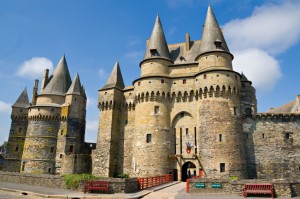Red Wine and Best-of-Breed Education

Nice chateau. Pity about the wine.
Some years ago I went with colleagues to a very traditional French restaurant in New Orleans. I asked for the wine list and received a very large book filled with French wines. I turned to the section on Bordeaux wines and found that it was organized by the Official Classification of 1855 as requested by Napoleon III. I thought, “Really? They want me to select a wine based on what people thought in 1855?”
The traditional way to evaluate French wines was to review the history of the chateau, identify the best winemakers, discuss the soil, humidity, and sunlight of the vineyard (the terroir), study the label, the bottle, and the cork, and then – and only then – taste the wine. Only by studying the wine’s history and pedigree could you truly appreciate what was in the glass. If you knew your history, the label would tell you what to expect.
Beginning in the 1970s, the wine world began to flip the model, largely because of the influence of California vintners. Rather than focusing on history (California had none) and traditional markers of prestige, the emphasis shifted to what’s in the glass. How does it taste? What can you discern by sniffing and sampling the wine? What flavors are in the glass? What flavors should be in the glass?
Blind taste tests began to replace traditional French methods of evaluating wines. In the Paris Wine Tasting of 1976 (often known as The Judgment of Paris), French judges were shocked when they learned that they themselves had rated many California wines better than elite French wines. Indeed, a California wine was judged the best white wine in the competition. (You can read about the competition – and a lot more – in Lawrence Osborne’s book, The Accidental Connoisseur).
So what does wine tasting have to do with higher education? Well, it strikes me that we’re still evaluating students using the traditional French method of evaluating wine. If the chateau that produced the wine has a good reputation, then the wine in the glass must be good. If the school the student attended has good reputation, then the student must be well educated.
It’s all rather silly, isn’t it? What we really want to know is how good is the wine and how well educated is the student. A prestigious chateau can produce a terrible wine. An elite university can produce poorly educated students.
Flipping the higher education model would create a student-centric model. Just as we ask, what’s in the glass?, so we should ask what’s in the student? It’s not about the reputation of the institution; it’s about how well the student has absorbed the education and what he or she can do with it.
Today, we’re accustomed to rating wines on a 100-point scale based on blind tastings. (I think the French are still annoyed by this). Why can’t we do the same with students? Is the educational bureaucracy the only obstacle? Then I think there’s hope. After all, we flipped the wine model in France … and they’re the ones who invented the word bureaucrat.